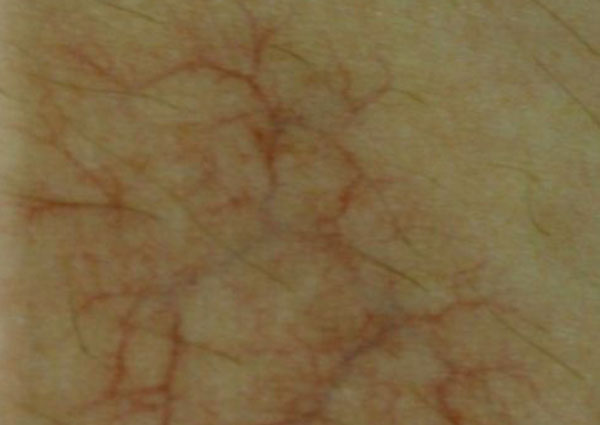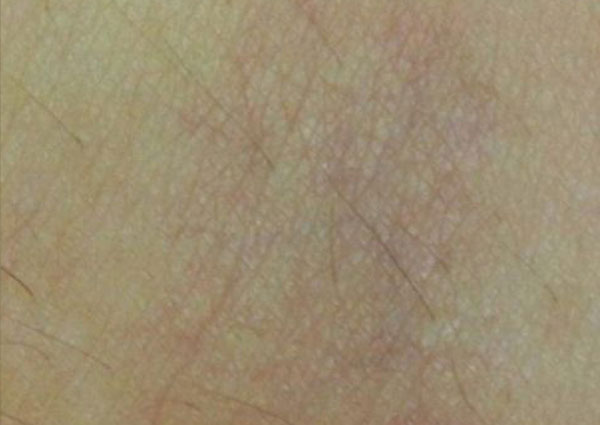TREATING UNWANTED VEINS WITH ND YAG LASER



Millions of women are bothered by spider veins – those small yet unsightly clusters of red, blue or purple veins that most commonly appear on the thighs, calves and ankles. In fact, it’s estimated that at least half of the adult female population is plagued with this common cosmetic problem.
Many “spider veins” can now be treated with laser therapy. The FDA approved 1064-nm Nd:YAG laser eliminates any unwanted facial or leg veins. One to three treatments are required.
WHAT ARE SPIDER VEINS?
Spider veins – known in the medical world as telangiectasias or sunburst varicosities – are small, thin veins that lie close to the surface of the skin. Although these super-fine veins are connected with the larger venous system, they are not an essential part of it.
A number of factors contribute to the development of spider veins, including heredity, pregnancy and other events that cause hormonal shifts, weight gain, occupations or activities that require prolonged sitting or standing, and the use of certain medications.
Spider veins usually take on one of three basic patterns. They may appear in a true spider shape with a group of veins radiating outward from a dark central point; they may be arborizing and will resemble tiny branch-like shapes; or they may be simple linear and appear as thin separate lines. Linear spider veins are commonly seen on the inner knee, whereas the arborizing pattern often appears on the outer thigh in a sunburst or cartwheel distribution.
WHAT ARE VARICOSE VEINS?
Varicose veins differ from spider veins in a number of ways. Varicose veins are larger – usually more than a quarter-inch in diameter, darker in color and tend to bulge. Varicose veins are also more likely to cause pain and be related to more serious vein disorders. Often surgical treatment beyond laser treatment is necessary for this condition.
WHO ARE THE BEST CANDIDATES FOR LASER TREATMENT FOR SPIDER VEINS?
Women of any age may be good candidates for laser treatment for spider veins, but most fall in the 30-to-60 category. In some women, spider veins may become noticeable very early on – in the teen years. For others, the veins may not become obvious until they reach their 40s.
If you are pregnant or breastfeeding, you may be advised to postpone lase treatment. In most cases, spider veins that surface during pregnancy will disappear on their own within three months after the baby is born. Nursing mothers are usually advised to wait until after they have stopped breastfeeding.
Spider veins in men aren’t nearly as common as they are in women. Men who do have spider veins often don’t consider them to be a cosmetic problem because the veins are usually concealed by hair growth on the leg. However, laser treatment for spider veins is just as effective for men who seek treatment.
WHAT TO EXPECT FROM LASER TREATMENT OF SPIDER VEINS
Laser treatment of spider veins can enhance your appearance and your self confidence, but it’s unrealistic to believe that every affected vein will disappear completely as a result of treatment. After each treatment session, the veins will appear lighter. Two or more sessions are usually required to achieve optimal results.
You should also be aware that the procedure treats only those veins that are currently visible; it does nothing to permanently alter the venous system or prevent new veins from surfacing in the future.
Before you decide to have laser treatments for spider veins, think carefully about your expectations and discuss them with your doctor.
RISKS RELATED TO LASER TREATMENT FOR SPIDER VEINS
Serious medical complications from laser treatment of spider veins are extremely rare when the procedure is performed by a qualified practitioner. However, they may occur. Risks include the formation of blood clots in the veins, severe inflammation, adverse allergic reactions and skin injury that could leave a small but permanent scar.
A common cosmetic complication is pigmentation irregularity – brownish splotches on the affected skin that may take months to fade, sometimes up to a year.
You can reduce the risks associated with treatment by choosing a doctor who has adequate training in laser treatments. A qualified doctor can help you determine the most appropriate treatment for your needs.
PLANNING YOUR TREATMENT
Your doctor will ask you about any other problems you may have with your legs, such as pain, aching, itching or tenderness. You will also be asked about your medical history, medications you take, or conditions that would preclude you from having treatment. Individuals with hepatitis, AIDS or other blood-borne diseases may not be candidates for sclerotherapy. Patients with circulatory problems, heart conditions, or diabetes may also be advised against treatment.
It’s important to be open in discussing your history and treatment goals with your doctor. Don’t hesitate to ask any questions or express any concerns you may have. Your doctor should explain the procedure in detail, along with its risks and benefits, the recovery period and the costs. (Medical insurance usually doesn’t cover cosmetic procedures.)
You will receive specific instructions from your physician on how to prepare for your treatment. Carefully following these instructions will help the procedure go more smoothly.
You’ll be instructed not to apply any type of moisturizer, sunblock or oil to your legs on the day of your procedure. You may want to bring shorts to wear during the injections, as well as your physician-prescribed support hose, and slacks to wear home.
When scheduling your procedure, keep in mind that your legs may be bruised or slightly discolored for some weeks afterward. You probably won’t be comfortable wearing shorts, a swimsuit or a mini skirt until after your legs have cleared up a bit.
GETTING BACK TO NORMAL AFTER LASER TREATMENT
Although you probably won’t want to wear any leg-baring fashions for about two weeks, your activity will not be significantly limited in any other way from laser treatment.
After each treatment, you will notice further improvement of your legs’ appearance.
A NEW LOOK
Most patients are pleased with the difference laser treatment makes. The skin of your legs will appear younger, clearer and more healthy-looking. If you’ve been wearing long skirts and slacks to hide your spider veins, you’ll now be able to broaden your fashion horizons. Often, patients are surprised at the dramatic difference in appearance between a treated leg and an untreated one.
Although laser treatment will obliterate the noticeable veins for good, it’s important to remember that treatment will not prevent new spider veins from emerging in the future. As time passes, you may find that you need “touch-ups” or full treatments for new veins that surface. But even if you choose not to have further laser treatments, your legs will look better than if you never had treatment at all.
SCHEDULE AN APPOINTMENT TODAY
ADDRESS
711 E Lamar Blvd # 200
Arlington, TX 76011
moreinfo@acderm.com
PHONE
817-795-SKIN (7546)
HOURS
Mon – Thur | 7:00 AM – 4:00 PM
Fri | 07:00 AM – 12:00 PM
Closed on Weekends







